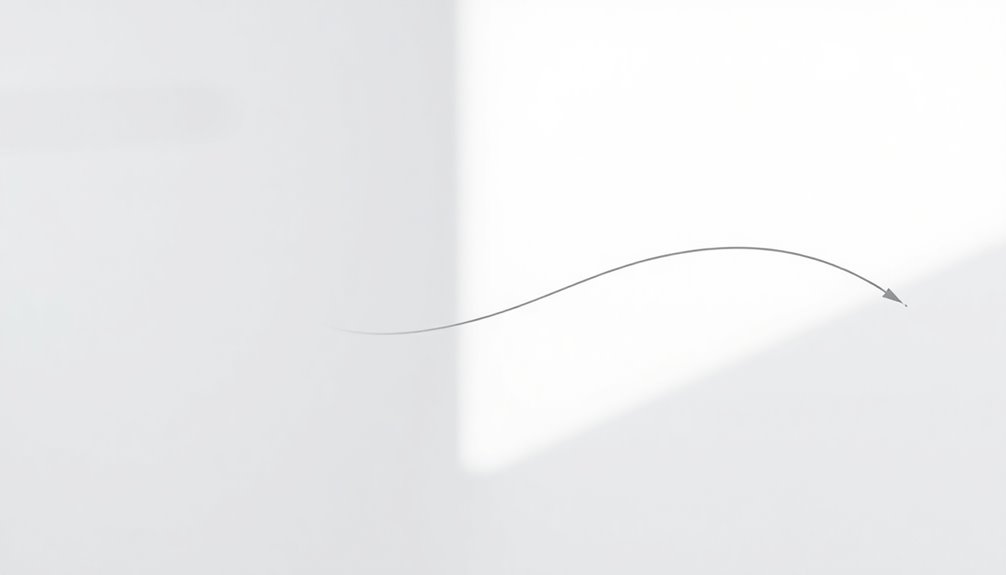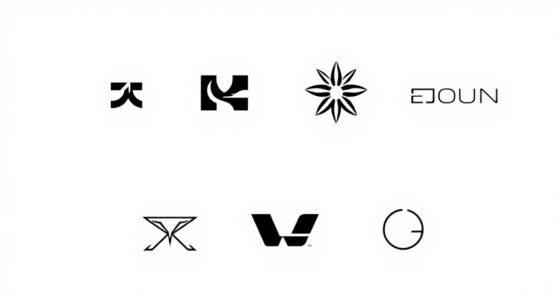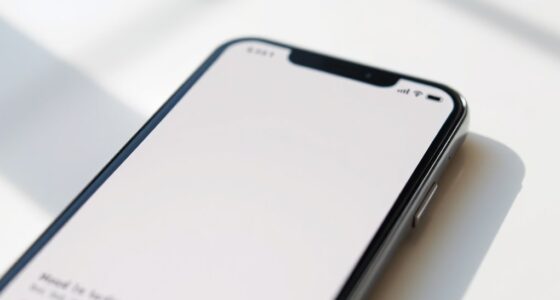Minimalist posters and visuals embrace the art of simplification, focusing on essential elements to convey complex ideas with clarity. By using a limited color palette and clean typography, you'll create striking designs that attract attention and foster engagement. The effective use of white space balances your composition and guides viewers towards key messages. With these principles in mind, you'll discover how minimalist design can enhance your projects and resonate with diverse audiences. Continue exploring for more insights!
Key Takeaways
- Minimalist posters prioritize essential elements, utilizing simplicity to convey complex ideas effectively and engage viewers.
- A limited color palette enhances visual cohesion, evoking emotions while maintaining a clean aesthetic in minimalist designs.
- The strategic use of white space guides attention, achieving balance and clarity while emphasizing key messages within the design.
- Bold typography combined with geometric shapes creates strong visual structures that attract attention and improve readability in minimalist visuals.
- Cultural heritage influences minimalist design choices, allowing for unique expressions that resonate deeply and communicate effectively across diverse audiences.
Understanding Minimalist Design Principles

When you embrace minimalist design principles, you focus on simplicity and clarity to convey your message effectively.
You prioritize essential elements, stripping away unnecessary details that might clutter your visuals. The use of white space becomes vital, enhancing balance and drawing attention to key components, which improves overall clarity.
A limited color palette not only creates visual cohesion but also allows important elements to pop, guaranteeing they stand out.
You'll often find geometric shapes in minimalist design, as they clarify ideas and contribute to a strong visual structure. Additionally, incorporating a functional layout can help in maximizing the impact of your minimalist visuals.
The Role of Color and Shape in Minimalism
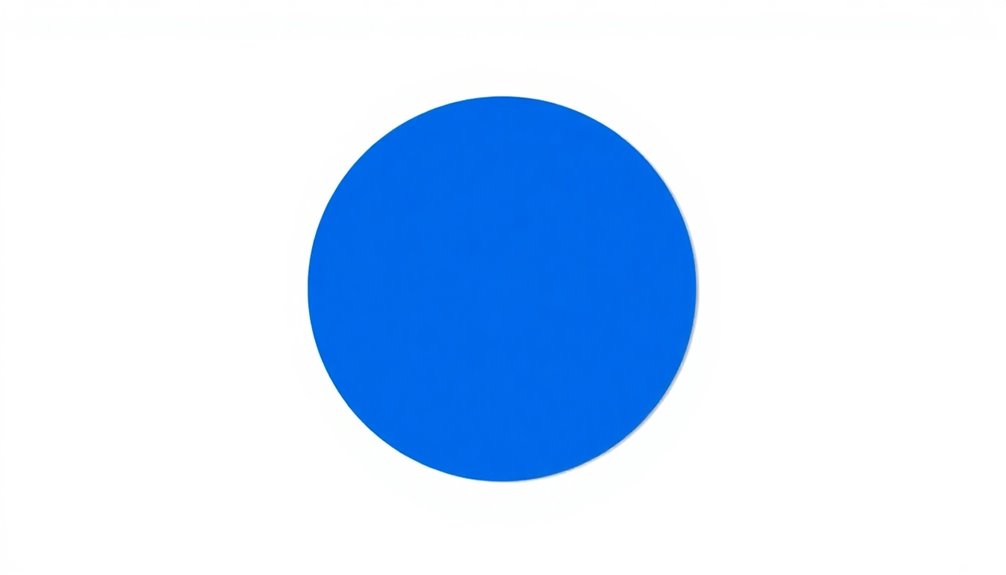
Minimalist design thrives on the careful selection of color and shape, which play pivotal roles in creating impactful visuals. A limited color palette enhances visual cohesion, allowing key elements to stand out and form a strong identity.
By using complementary colors, you can evoke the desired mood while maintaining simplicity and clarity. Geometric shapes serve as the backbone of minimalist design, offering clear representation of ideas and attracting attention.
The contrast between colors and shapes not only boosts visual interest but also helps communicate your core message effectively. Simple shapes resonate universally, transcending language barriers and reinforcing the appeal of your minimalist approach.
Incorporating figurative language can also elevate the emotional impact of your designs, creating a deeper connection with the viewer. Embracing these elements guarantees your designs remain engaging and purposeful.
Typography: The Silent Communicator
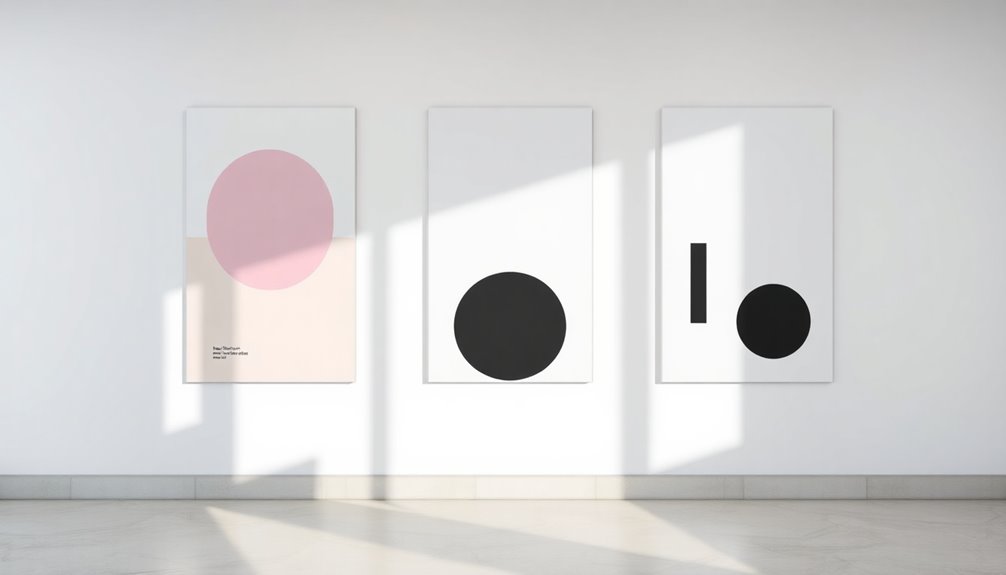
Typography serves as the silent communicator in minimalist design, silently conveying messages through its careful selection and arrangement.
You'll often find clean, legible sans-serif fonts, like Helvetica or Arial, enhancing readability and clarity. The size and placement of text are essential; bold or larger fonts strategically capture attention for key messages without overwhelming viewers.
Achieving contrast through different weights and styles keeps the design visually interesting while adhering to minimalist principles. Effective typography acts as a design element, integrating harmoniously with the overall aesthetic to enhance communication. Additionally, the calming effects of lavender oil in aromatherapy can serve as inspiration for creating a tranquil and focused design atmosphere.
The Power of White Space
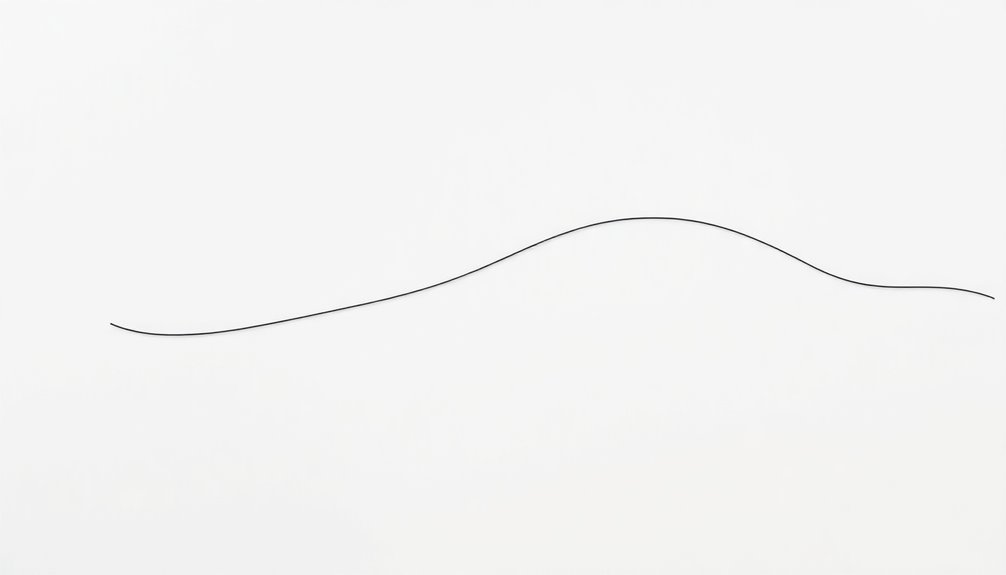
White space is vital in minimalist poster design, helping you achieve visual balance and clarity.
When you use it effectively, you guide the viewer's attention to the most important elements, creating a more engaging experience. Additionally, incorporating bold colors can enhance the overall impact of your design while still maintaining a minimalist approach.
Enhancing Visual Balance
When designing a poster, understanding the importance of negative space can transform your creation into a visually striking piece.
Utilizing white space effectively enhances visual balance, allowing key elements to breathe and stand out. This intentional design fosters clarity, preventing clutter that can distract viewers.
By strategically positioning your elements within the white space, you guide attention to the core message, ensuring it resonates with your audience.
Iconic designs, like the Apple logo, illustrate how embracing white space can create memorable visuals.
Remember, a clean and purposeful visual language not only elevates aesthetics but also deepens viewer engagement. Additionally, incorporating empathy-driven design can enhance the overall effectiveness of your visual communication by connecting more deeply with your audience.
Guiding Viewer Attention
Effective use of negative space not only enhances visual balance but also plays a pivotal role in guiding viewer attention.
In minimalist posters, white space serves as a powerful tool to emphasize key elements and foster visual clarity. By strategically positioning design components within white space, you create a balanced layout that reduces distractions and allows your core message to resonate.
Iconic designs, like the Apple logo, showcase how effective white space can create memorable visuals that engage your audience deeply. This approach aligns with the "less is more" philosophy, simplifying complex ideas into clear, impactful visuals.
Embracing white space not only highlights essential components but also contributes to an elegant visual language characteristic of minimalist design. Additionally, incorporating mindful art of decluttering into your living space fosters an environment that inspires creativity and focus.
Practical Applications of Minimalist Posters

Minimalist posters can transform how you communicate ideas, making complex messages clear with just a few elements.
Their versatile design fits perfectly in marketing materials, office spaces, or even as motivational pieces in your home. The simplicity of minimalist design can enhance astrological compatibility in visual communication, making it easier for audiences to connect with your message.
Effective Communication Techniques
While you might think that complexity drives communication, minimalist posters prove that simplicity often speaks louder.
By focusing on essential design elements, these visuals effectively convey a message while capturing attention.
Here are four effective communication techniques to reflect upon:
- Bold Typography: Use strong fonts to highlight your core message and enhance readability.
- Restrained Color Palette: Limit colors to create visual harmony and draw attention to key points.
- Strategic White Space: Incorporate white space to guide the viewer's eye and emphasize important content.
- High-Quality Imagery: Select impactful visuals that resonate globally, transcending language barriers.
Additionally, employing AI tools can help analyze audience preferences and refine your minimalist poster designs for maximum impact.
Versatile Design Applications
When you embrace the power of minimalist posters, you'll discover their versatility in various design applications. These posters effectively convey messages using core elements, emphasizing clarity and focus.
By utilizing limited colors and bold typography, you can create designs that enhance visual appeal while maintaining simplicity.
Consider motivational posters that feature powerful quotes against solid backgrounds—these engage viewers and inspire action. Minimalist designs also shine in branding, event promotion, and educational materials, ensuring your message stands out.
Their adaptability allows them to complement diverse settings, from home decor to corporate environments, fostering a clean, modern aesthetic.
As you explore the creative process, you'll find that minimalist posters are perfect for making impactful statements without overwhelming your audience. Additionally, the advanced sensors in robot vacuums exemplify how simplicity in design can lead to enhanced functionality and efficiency.
Inspiring Examples of Minimalist Art

Five striking examples of minimalist art showcase how simplicity can powerfully convey complex ideas.
In the world of minimalist posters, you'll find that carefully chosen elements draw attention and communicate the overall message effectively.
Here are some inspiring instances:
Inspiration can be found in the simplicity of design, where minimalism speaks volumes through carefully curated elements.
- Bruno Carvalho's Collection: Silhouettes of "Oppenheimer" and "The Bear" use simple forms for visual impact.
- Saul Bass: His iconic movie posters utilize limited color palettes and clean typography.
- Olly Moss: Known for his clever use of space and symbols, he creates aesthetic pleasing designs.
- Nike Swoosh: This high-quality visual transcends language barriers with its minimalist elegance.
These examples illustrate how Minimalism in Graphic Design creates high-quality visuals that resonate deeply with audiences. Additionally, the influence of cultural heritage and upbringing can often shape an artist's approach to minimalist design, leading to unique and impactful creations.
Frequently Asked Questions
What Are the 3 Characteristics of Minimalism Art?
Minimalism in art focuses on simplicity, emphasizing essential elements while stripping away the unnecessary.
First, it often uses a limited color palette, which helps key features stand out.
Second, the strategic use of white space guides your eye, creating balance and focus.
Finally, clean typography, usually sans-serif, guarantees readability while maintaining an elegant aesthetic.
These characteristics combine to create powerful visuals that communicate effectively without overwhelming the viewer.
What Is the Minimalist Art Style Called?
Imagine walking into a room, and the simplicity of a single, elegant sculpture captivates you.
This is Minimalism, an art style that strips down to essentials, focusing on form and space.
You'll find it's characterized by geometric shapes and limited colors, conveying powerful messages without clutter.
Artists like Donald Judd exemplify this approach, proving that less truly can be more, allowing you to appreciate the beauty in simplicity and the essence of form.
What Is a Minimalist Poster?
A minimalist poster's all about distilling complex ideas into their essence.
You'll notice it uses simple shapes and a limited color palette, making key elements pop.
Strategic white space balances the design, creating a calming effect.
Typography leans towards clean, sans-serif fonts that enhance readability without cluttering the visual.
Influenced by iconic designers, these posters embody the "less is more" philosophy, effectively telling a story through minimalistic visuals.
What Is the Theory of Minimalism Art?
Think of minimalism as a refreshing change in a cluttered room.
The theory of minimalism in art focuses on stripping away the unnecessary, allowing you to see the essential forms and colors clearly.
By using geometric shapes and a limited color palette, it creates a strong visual identity.
This simplicity invites you to engage more deeply, prompting reflection and interpretation, making each piece resonate with profound meaning.
Conclusion
In a world overflowing with information, embracing minimalist design can truly make your visuals stand out. Did you know that 94% of first impressions relate to design? By simplifying your posters and focusing on essential elements, you grab attention and communicate more effectively. Remember, less really is more. So, whether you're designing for a project or just for fun, let the art of simplification guide you to create impactful visuals that resonate with your audience.
